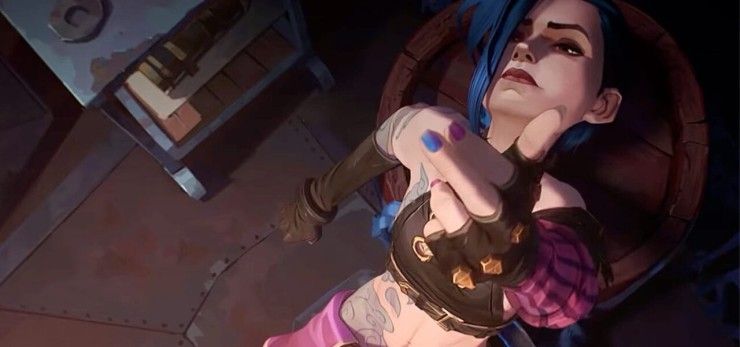
Managing your tone can be the hardest part.
When adapting video games to television, you have to be conscious of the source material, while also finding ways to draw players into a world where they cannot create anything. This was the task given to the team behind Arcane: League of Legends. This Netflix show happens in the League of Legends universe and had to surmount all these obstacles to become one of the most popular shows across the globe.
In order to do all of this, they had to balance a story that's rife with tragedy and trauma and find a tone that never felt too dour or dragged the story down. The premise of the show is, "Amidst the escalating unrest between the advanced, utopian city of Piltover and the squalid, repressed undercity of Zaun, sisters Vi and Jinx find themselves on opposing sides of a war over twisted ideologies and arcane technology."
Learn how they balance it all with a video from Savage Books, and let's chat after you watch. (Some spoilers for Arcane ahead.)
How Arcane Masters Tragedy, Trauma, and Tone in Its Writing and Cinematography
After debuting in Netflix's Top 10 and earning a second season, Arcane has been the talk of the town. Its modern and flash animation style helps solidify the worldbuilding and the universe presented. Inside the show, the story, characters, themes, and tones are as complex as the visuals.
Arcane's theme is duality in life; it takes on good and bad, tradition versus trailblazing, and safety versus danger. These dualities present themselves across the entire series. We often see it in the perspectives of characters and the worlds they inhabit. In privileged worlds, we see people feel safe, particularly children. As the world crumbles, we see this all stripped away. Suddenly danger is everywhere, kids are dying, and the veneer of the world shifts. While Vi and Powder live in the "Undercity,” the rich people in Piltover, the “City of Progress” (like Jayce and Viktor) stay within the lighter tones in the story and in color choices.
There's so much duality in every element of this storytelling. We have opposing characters, cities, and it all boils down to life and death, which is the ultimate duality of all of existence. None of this is objectively right or wrong. It occurs in a gray area that forces you to understand each person's motivation.
This is supported by the visuals, which become darker, with muted colors and a more frenetic editing style.
Of course, this also changes the tone of the story. The tone of the show shifts from lighter in the earlier episodes to dark and dramatic, with a fine line of melodrama. But this shift mirrors the thematic duality with a light and comforting story that pulls the rug out from under us as it progresses.
In episode three, we get into kidnapping, murder, and violence that sets the world ablaze. Now the story will be about coming back from trauma.
One of the strongest parts of the show is that they don't waste time on info dumps or exposition. We are presented a story, and the audience has to pay attention to the screen to understand the world and how it works. These layers provide real drama and create characters we care about and invest in. Knowing they're willing to kill people at any time gives stakes without anyone saying them out loud.
Have you been watching? What do you think of this analysis? Let us know in the comments.
Your Comment